Lady Margaret Beaufort (1443-1509)
by Dr Frank Woodman
Educationalist, scholar and philanthropist, Margaret Beaufort was the richest woman in English Medieval history and used her wealth to promote education and religion. For a time she was considered heir to the throne by the unfortunate Henry VI, and even when this threat passed, her son Henry Tudor (her only child from the first of three marriages) was seen as the only alternative to the Yorkist King Richard III. After the Tudor victory in 1485, Margaret assumed the title of the King’s Mother and set about supporting and financing a variety of educational, charitable and religious projects. The sponsor of Caxton and early printing, she herself translated and published the Imitation of Christ (Thomas a Kempis), while through her confessor, St. John Fisher, she was drawn into the world of Cambridge University . Margaret was the principal patron for the rebuilding of the University Church (Great St. Mary’s) and in 1505, she re-founded Godshouse as Christ’s College, fulfilling the promise of her brother-in-law Henry VI. Margaret Beaufort encouraged her son to promote the successful completion of King’s College Chapel and went on to establish the foundation of St. John’s College , completed after her death in 1509. Despite her ground-breaking role as a woman in education, Margaret remained deeply conservative in her outlook. She would have had little sympathy for the New Learning of the early sixteenth-century, although, ironically, her founding of University Lectureships at both Oxford and Cambridge in 1502 proved but one way in which such new ideas could be spread.
On 27 June 2009, almost to the day the 500th Anniversary of her death, Christ’s College celebrated the extraordinary life and generosity of Lady Margaret Beaufort. We were delighted to welcome Dr David Starkey, Dr Francis Woodman, Professor Lisa Jardine, Dr Charles Saumarez Smith, Miss Penelope Keith, Professor Quentin Skinner, Professor David Reynolds and Professor Geoffrey Martin, on this day of celebration.
Further information about Lady Margaret Beaufort
Jones, M & Underwood, M. The King’s Mother, CUP 1992
tudorhistory.org/people/beaufort/
www.britannia.com/bios/ladies/mbeaufort.html
www.newadvent.org/cathen/02376a.htm
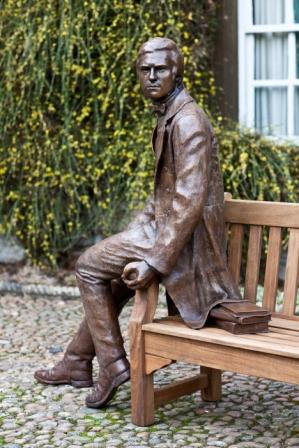
Christ's College is where the famous biologist and naturalist and father of evolutionary biology, studied. He was a young, innovative and enthusiastic student, destined initially for a life in Holy Orders. From Cambridge he embarked on a ground-breaking journey of discovery on HMS Beagle and fifty years after his birth, his seminal work The Origin of the Species was published.
In Christ's in 2009, we celebrated our unique experience of Darwin the student with the public opening of his student rooms (from February 2009) and an unveiling of a specially commissioned bronze sculpture of Darwin as a young man contemplating the origin of our existence.
On this page you will find links to websites and events that took place in Christ's College celebrating the bicentenary of Charles Darwin's birth in 2009.
The picture shows The Young Darwin: Darwin the student - sculpture by Anthony Smith.
Lectures, articles and websites for the Darwin Celebrations held in 2009
Lady Margaret Lectures
- Professor Marsha Richmond on 11/3/09, 'Darwin & Genetics, 1859-1909'
- Professor Richard Fortey on 22/4/09, 'The Scientist as Hero'
- Professor David Sedley on 6/5/09, 'Socrates vs Darwin' transcript / audio
Websites
Charles Darwin and Evolution: an exciting resource for all ages concerning the work and legacy of Darwin's discovery and its implications for the world, science and religion. This website was made by students from Christ's College.
Commemorative booklet
Darwin in Cambridge, by John van Wyhe, (commemorative booklet, published by Christ's College).
To order this directly from Heffers Bookshop, Cambridge, click here.
Articles
Three articles by Dr David Norman et al and an overview on Cambridge Research Horizons:
- In Darwin's footsteps: the geology of the Galapagos;
- Commemorating Darwin;
- Spotlight on Darwin
- Into the field again: re-examining Darwin's 1835 geological work on Isla Santiago
Darwin and Christ's College by John van Wyhe, Bye-Fellow, Christ's College.
In College
- Darwin's College room at Christ's
- Dr John van Wyhe talks to Sara Varey on BBC Radio Cambridgeshire about Darwin's restored rooms in Christ's College.
- Darwin Garden
- Darwin sculpture by Anthony Smith
- Image of the Darwin Bust in the portico at Christ's
- Darwin manuscript discovered at Christ's College after a century of darkness
Events in Christ's
- Darwin Celebratory Dinner (12th February 2009)
- Darwin's birthday: images from the celebrations on 12th February 2009.
- Darwin openings: images from Christ's College, 20th February 2009.
- Darwin film/article competition for 6th Form and Undergraduate students in Cambridgeshire, sponsored by The Foundation for Genomics and Population Health
Events outside Christ's College
- BBC Cambridgeshire Gallery: Charles Darwin's rooms
- Darwin: In Our Time (Melvin Bragg's Radio 4 series with strong contributions from members of Christ's)
- The BBC Darwin Season
|
A BRIEF BIOGRAPHY OF CHARLES DARWIN (1809- 1882) Charles Darwin was a British naturalist and most famous as the father of evolutionary biology and originator of the theory of natural selection. As naturalist for 5 years aboard the ship HMS Beagle, during its voyage around the world, Darwin gained the experience that led to his epoch-making book On the Origin of Species (1859). This was followed by The Descent of Man (1871) which argued that humans and apes shared a common ancestor - a revolutionary theory for its time. Darwin is buried in Westminster Abbey. Darwin was admitted to Christ's College on 15th October 1827 , gaining his BA in 1831, his MA in 1836 and an honorary doctorate in 1877. |
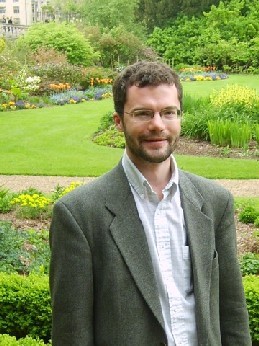
Dr David R. M. IRVING BMus (Hons), MPhil, PhD
Fellow since 2007
Junior Research Fellow
Email: drmi2 "at" cam.ac.uk
Website: http://www.mus.cam.ac.uk/people/research/drmi2/
Musicologist and cultural historian David R. M. Irving researches the central role played by music in the early modern processes of intercultural exchange and globalization. He completed his doctorate at Clare College, Cambridge, under the supervision of Tess Knighton, with a study on music in the Philippines under Spanish colonial rule, 1565–1815. His first book, Colonial Counterpoint: Music in Early Modern Manila, will be published by Oxford University Press in 2010. During the academic year 2009–2010 he is delivering a series of lectures at Christ’s College on The Globalization of Music: Origins, Development, & Consequences, c1500–1815. He teaches and supervises courses at the Faculty of Music on subjects including the Jesuits and music, Orientalism, historical performance practice, ethnomusicology, and general European music history.
David is Reviews Editor for the Cambridge University Press journal Eighteenth-Century Music, and is also Director of Studies in Music for Downing College, Cambridge. In 2009 he was elected a Fellow of the Royal Asiatic Society. He has also worked as a freelance performer on early violin; he has toured and recorded with ensembles including the Australian Brandenburg Orchestra, the Gabrieli Consort & Players, the Hanover Band, La Serenissima, the Early Opera Company, St James’s Baroque Players, La Compañía Musical, and XVIII–21 Le Baroque Nomade. He has given many recitals around the United Kingdom in collaboration with organist and harpsichordist James McVinnie.
Dr Philip WITHINGTON
Fellow since 2008
University Lecturer, History ESRC Research Fellow (2007-2010)
Email: pjw1003 "at" cam.ac.uk
Website: http://www.hist.cam.ac.uk/directory/pjw1003@cam.ac.uk
Phil Withington was born in Yorkshire, trained as a historian in Cambridge, and worked in Aberdeen and Leeds before taking up his current position in 2008. His research centres on the social and cultural history of early modern Britain and, increasingly, empire. He has published extensively on urban society and citizenship; on reading early modern authors and their texts in social context; and on early modern militarism. He also has a more general concern with inter-disciplinary approaches to the past and the relationship between language and social change. As the holder of a three-year Research Fellowship from the ESRC he is currently pursuing two particular projects. The first looks at intoxicants and intoxication as both trans-historical phenomena and, more particularly, as drivers of cultural, social, economic and political change in early modern Britain. The second considers the relationship between early modernity and the development of theories and practices of 'society' in sixteenth and seventeenth century England.
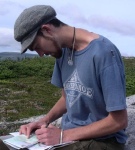 Fellow 2005-2009
Fellow 2005-2009
Bye-Fellow 2011-12
Royal Society University Research Fellow
Email:
Website:
The earth's climate changes continuously over a wide range of time-scales. We know this because the effects of past climate changes have been varied and intense enough to leave their imprint on the geological record. It is the task of Quaternary palaeoclimatologists (i.e. geologists who deal in mud, rather than rocks) to seek out the geological clues (in lakes, bogs, caves, ice-cores and in sediments from the bottom of the sea) that may allow us to broaden our view of the climate system beyond the remit of direct (historical) observation. It was to learn more about this field of research, and undertake an MPhil course in Quaternary Science, that I came to Cambridge in 1999. Previously, I had completed an undergraduate degree in Geological Engineering (Queen's University, Canada), and after finishing the MPhil course here in Cambridge, I began a PhD project studying the causes and effects of past climate changes in the North Atlantic region, including in particular abrupt changes in the intensity of the ocean circulation cell that includes the Gulf Stream. Currently, I am carrying on this research as a Royal Society University Research Fellow in the Department of Earth Sciences, where my most immediate research task is to investigate how ocean circulation changes may be linked to the melting or collapse of polar ice-sheets and to variations in global atmospheric Carbon-14 and Carbon Dioxide concentrations.
David BUTTERFIELD BA, MPhil Cantab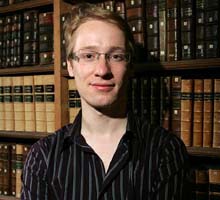
Fellow since 2008
W H D Rouse Research Fellow
College Lector in Classics
Email: djb89 "at" cam.ac.uk
Website: http://www.classics.cam.ac.uk/faculty/staff-bios/research_staff/david_butterfield
David Butterfield entered Christ's as a Classics undergraduate in 2003 and graduated in 2006, having specialised in Latin textual criticism, ancient philosophy and Indo-European linguistics. He completed his MPhil at Christ's in 2007, working with Professor David Sedley on a vexed problem in Epicurean physics. His doctoral thesis, by contrast, concerns the textual transmission of Lucretius' de rerum natura up to the Carolingian period. During the tenure of his Fellowship he will also be working upon a critical thesaurus of Lucretian emendations, a collection of Lucretian textual adversaria and a volume of collected essays upon A E Housman. His interests outside all things Lucretian include textual criticism, Latin literature in general, the history of Classical scholarship and the collecting of antiquarian books. He was pre-elected to the W H D Rouse Research Fellowship in 2007 but deferred taking up the position until Michaelmas 2008.
History of the Foundation
Statutes were first granted to the College in 1506. By modern standards these were extremely durable, surviving unchanged until 1860. Indeed, the oath which Fellows swore on admission precluded attempts to seek revocation or change to the statutes, though it did not seek to prohibit the grant of additional, supplementary statutes.
University reforms in the second half of the 19th century led to the establishment of University Commissioners, who drafted new statutes for the College in 1860. A further revision occurred in 1882; this version was the first to use English as primary language. Since that time, there has been a fairly continuous process of revision, usually through a stream of minor changes but occasionally by a complete restatement. Change has been for the most part promoted by the College, though a few alterations reflect changes in national education policy promoted by the Government of the day.
A complete redraft of the College's statutes was approved by her Majesty in Council in 1976. The statutes have been revised on a number of occasions since then, the latest occasion being in December 2024.
Statutes and Ordinances - updated December 2024
by John van Wyhe, Bye-Fellow 2005-2010
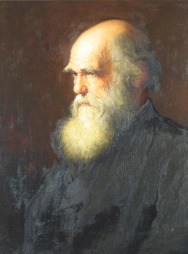
Charles Darwin was an English naturalist whose work revolutionized the life sciences. He is arguably the most famous alumnus of Christ's College.
(Left) The portrait of Darwin which hangs in the College hall is a copy (1883) by the artist, Walter William Ouless (1848-1933), of one commissioned by the Darwin family in 1875 as a birthday present for Darwin. Darwin quipped the portrait made him look like "a very venerable, acute, melancholy old dog".
Darwin's name was entered in the admissions books at Christ's on 15 October 1827.
Admissi sunt in Collegium Christi a Festo Divi Michaelis 1827 ad Festum eiusdem 1828 :
[No. 3.]
Octobris 15. Carolus Darwin admissus est pensionarius minor sub Mro Shaw.
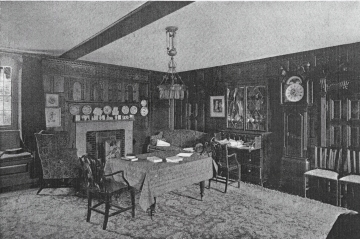
Darwin's room in 1909
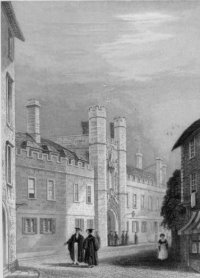
Christ's in the 1830s
However, as Darwin had forgotten much of his school Greek, he was tutored before coming up to Cambridge in the Lent Term of 1828. All the College rooms were full so Darwin took lodgings over the tobacconist's in Sidney-street, the site now occupied by Boot's the chemist. The view from his window would have been that of the engraving (right). A blue plaque under the the first floor windows of Boot's commemorates Darwin's stay there. On All Saint's Day in November 1828 Darwin moved into a set of rooms in College, as he later recalled, "in old court, middle stair-case, on right-hand on going into court, up one flight, right-hand door & capital rooms they were." According to College tradition the same rooms were once occupied by the great natural theologian, William Paley (1743-1885) whose portrait faces Darwin's in the hall and in the stained glass of the hall's south window. (See below) Darwin's father intended him at this time for the church and Darwin was not altogether unhappy with this prospect. It would provide the leisure and freedom required to pursue his growing scientific interests. While at Christ's Darwin became an avid beetle collector. He had a special six-drawer cabinet built to house his collection. He decorated his room with eighteenth-century engravings of master paintings. Darwin was equally devoted to shooting. As he recalled in his autobiography:
When at Cambridge I used to practise throwing up my gun to my shoulder before a looking-glass to see that I threw it up straight. Another and better plan was to get a friend to wave about a lighted candle, and then to fire at it with a cap on the nipple, and if the aim was accurate the little puff of air would blow out the candle. The explosion of the cap caused a sharp crack, and I was told that the Tutor of the College remarked, "What an extraordinary thing it is, Mr Darwin seems to spend hours in cracking a horse-whip in his room, for I often hear the crack when I pass under his windows."
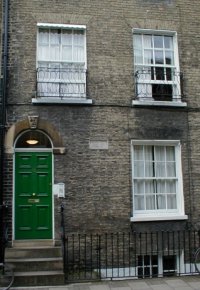
Darwin graduated in the Easter Term of 1831. Although he later recalled that: "During the three years which I spent at Cambridge my time was wasted, as far as the academical studies were concerned." It is certainly the case that Darwin became irreversibly devoted to science at Cambridge. His beetles were more than a hobby and his biological work under his mentor, Professor John Stevens Henslow (1796-1861), prepared him for a life in science. Shortly afterwards he was taught the rudiments of geology by Professor Adam Sedgwick (1785-1873). It was Henslow who passed on the invitation to Darwin to accompany Captain Robert Fitzroy (1805-1865) on board the voyage of HMS Beagle as naturalist and gentleman companion.
Upon returning from the five-year voyage in 1836 Darwin returned to Cambridge to sort out his specimens for three months. He took lodgings in Fitzwilliam Street (today marked by a stone plaque). He dined often in college and regaled the fellows with tales of cannibals and his adventures. Arthur Shipley wrote in the College Magazine in 1909:
[Darwin] was apparently a good deal in college, and was evidently made a "Member of the Room," for his name occurs frequently in the Combination Room wine book. This book, which dates back to pre-Napoleonic times, is one of the few records the college retains of the presence of the great naturalist.
Darwin moved to London in 1837 to begin his life of publishing the results of his voyage, both geological and biological.
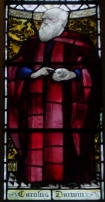
His great work On the Origin of Species (1859) demonstrated with converging evidence from geographical distribution, comparative anatomy and embryology, and the fossil record that life evolves. His theory showed how the great variety of living things are related by common genealogical descent and how all living things come to be exquisitely adapted to their environments. The most important mechanism for change was what he called 'natural selection'. This process is the necessary result of the fact that all organisms vary and are not identical copies and vastly more individuals are born than ultimately survive to breed. Therefore only a tiny minority survives to reproduce. Darwin realized that there must be something special about these surviving minorities. The success in surviving was termed selection because it was analogous to the conscious selection of farmers and breeders of which stock to perpetuate. In later works such as The Descent of Man (1871) and The Expression of the Emotions (1872), Darwin showed that there is not an absolute difference of kind between humans and other animals, but one of degree. Although controversial at first, Darwin's work was accepted by the vast majority of naturalists during his lifetime.
Later Darwin sent his eldest son William to Christ's in the 1860s. On 17 November 1877 Darwin was awarded an honorary degree of Doctor of Laws (LL.D.) from the University of Cambridge in Senate House. Darwin died in 1882 and is buried in Westminster Abbey.
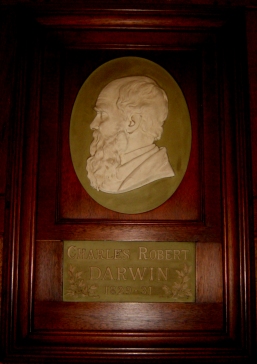
This Wedgwood plaque by Thomas Woolner was placed
in Darwin's room in 1885 by his son George Darwin.
In 1909, the centenary of Darwin's birth and the fiftieth anniversary of the publication of the Origin of Species, celebrations were held at Christ's and the University. Darwin's rooms were made into an exhibition space with many photographs, manuscripts and other artifacts on display. Hundreds of distinguished visitors from around the world came to see the exhibition and signed their names in a book now kept in the Old Library. An American delegation presented the college with a large bronze bust of Darwin made by the sculptor William Couper for the New York Academy of Sciences in the same year. The first bust was given to the American Museum of Natural History who commissioned a copy from Couper to send to Cambridge. The bust now stands in the portico in the college grounds.
Arthur Shipley remarked in a speech at the time: "His relations to Christ's were always of the most cordial kind, and it has ever been a subject of regret to the governing body that their new statutes did not pass through Parliament in time for them to confer the only honour they could confer upon Darwin, that of an honorary Fellowship." Darwin himself recollected in his autobiography written in 1876 "Upon the whole, the three years I spent at Cambridge were the most joyful of my happy life."
The Complete Work of Charles Darwin Online
A Darwin manuscript discovered at Christ's College after a century in darkness
by John van Wyhe, Bye-Fellow
A Darwin manuscript has been discovered at Christ's College that had been hidden since 1909.

For many years a framed photograph of Charles Darwin (1809-1882) hung on the end of a book case in the Old Library. Also inside the frame, just below the photograph, a small rectangular opening in the mount diplayed the signature 'Ch. Darwin'. During recent visits to the Old Library I was curious to know if this
signature was just a scrap of paper cut from a letter, or if it was written on a document still preserved, though sealed inside the frame.
The photograph, and the frame, have their own story. A penciled note on the wooden back of the frame explains:
This photograph of Darwin was presented by him to my Uncle, F.D. Dyster, of Tenby. I am informed by Francis Darwin, his son, that the photograph was probably taken in the year 1854, but he had never seen it. F. H. H. Guillemard.
Below this it is explained that it was displayed at Christ's during the Darwin centenary exhibition in 1909.
Finally a typewritten note records that Guillemard gave the framed photograph to the College in 1934.
There is an entry for the photograph in the 1909 exhibition catalogue.
91. PORTRAIT OF CHARLES DARWIN.
Lent by Dr. F. H. H. Guillemard.
Photograph probably taken about 1854 and given by Charles Darwin to F. D. Dyster, Esq., the microscopist.
(Shipley, Darwin Centenary. The portraits, prints and writings of Charles Robert Darwin. Exhibited at Christ's College, Cambridge, 1909.)
This photograph was taken about one year after Darwin started full-time work on his species theory, c. 1855 by Maull and Polyblank for the Literary and Scientific Portrait Club. A Darwin letter to J. D. Hooker on 27 May 1855 refers to this photograph: 'if I really have as bad an expression, as my photograph gives me, how I
can have one single friend is surprising.' (Correspondence of Charles Darwin, vol. 5, p. 339.)
There is no known surviving Darwin correspondence with Frederick Daniel Dyster (1810-1893). He was a surgeon naturalist with strong interests in marine zoology. Dyster was a friend of T. H. Huxley and attended Emma Darwin's aunt, Jessie Sismondi, when she died on 3 March 1853. (Litchfield, H. E. ed. 1915. Emma Darwin, A century of family letters, 1702-1896. London: John Murray. Volume 2, p. 152)
The College Librarian, Candace Guite, and the Keeper of Pictures, David Norman, gave permission for the frame to be removed and opened. This was done by Conservation Officer, Melvin Jefferson.
On opening the frame, which had presumably been sealed since 1909, Jefferson found the Darwin signature to be the endorsement on the back of a cheque! The entire cheque had been carefully folded and preserved so that just the signature on the back could be seen through the mount.
The cheque is from the Union Bank of London, made out by Darwin 'to self' for 100 pounds on 21 March 1872!

Photo by Melvin Jefferson.
The entire cheque transcribed is as follows (Darwin's writing is in bold):
No. V18356 London March 21 1872
The Union Bank of London,
CHARING CROSS BRANCH 4, PALL MALL EAST.
Pay to self or Order One Hundred Pounds100.0.0
This Cheque must be endorsed by the party to whom it is payable
Ch. Darwin
On the reverse it is signed: 'Ch. Darwin' – this being the signature visible under the framed photograph.
The cheque is stamped: 'Paid Mar. 22' A hole in the centre probably indicates Darwin put the cheque on his spits.
What was Darwin doing on 21 March 1872? We know from his 'Journal' or diary that he and his family left their rented London holiday house on that very day to return to their home in the village of Downe, Kent.
'Feb. 13 to March 21. London, 9 Devonshire St. Portland Place (5 weeks)'.
According to the Calendar of his correspondence, Darwin acknowledged payment from his American publisher on the 16th. American editions of Darwin's new book, The descent of man, had been in print since 1871.
So how did the cheque end up inside the frame with the photograph Darwin gave to Dyster? Dyster's nephew, Dr Francis Henry Hill Guillemard (1852-1933), a geographer and travel writer, signed the exhibition guest book at Christ's College with Francis Darwin on 11 June 1909. Perhaps Francis Darwin offered the cheque from his father's papers as an example of his signature. Darwin's papers had now become so precious that the cheque was preserved, and the signature not just cut out.
And so the photograph, and the cheque bearing Darwin's signature, were sealed behind glass in 1909. In 1934 the frame was given to Christ's (probably after the death of Guillemard) where it has hung ever since.
Both the photograph and the cheque will now be conserved according to modern standards.
To find out more about Darwin see: The Complete Work of Charles Darwin Online.

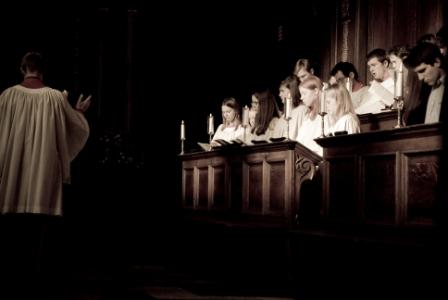 The Chapel Choir sings
The Chapel Choir sings